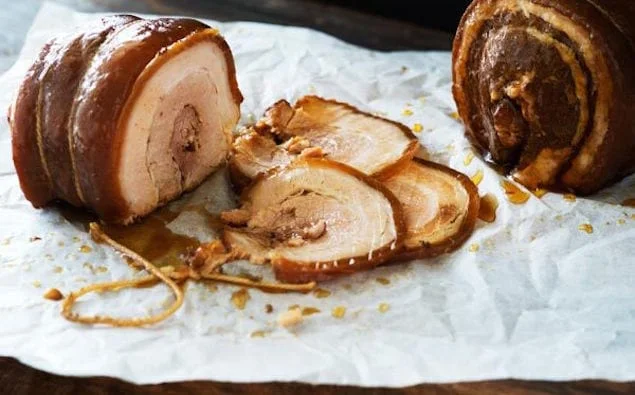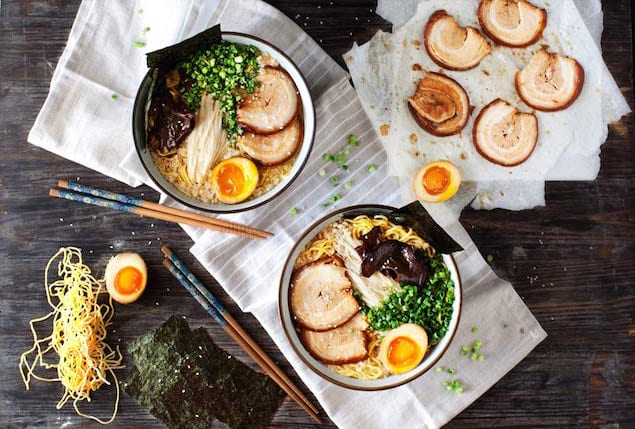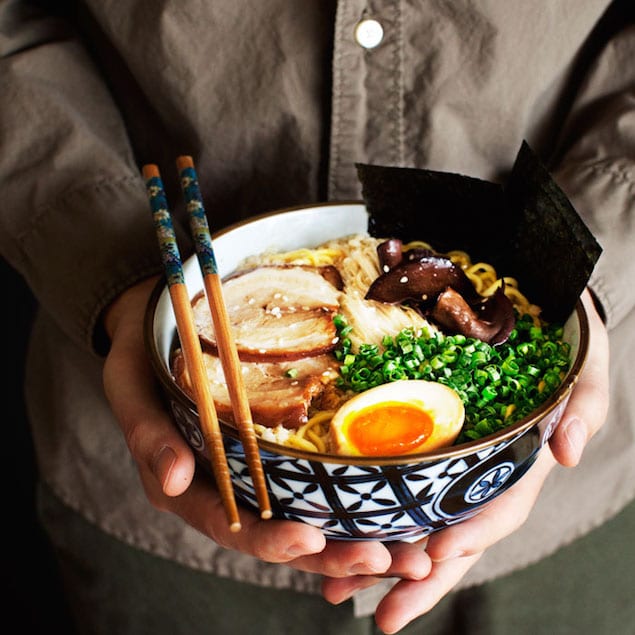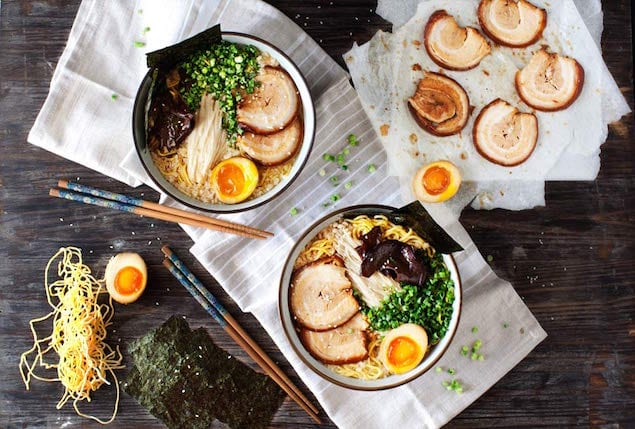Once you have really fallen in love with the amazing comfort food that is ramen, then it is time to learn to make it. Learn the tips to the best broth and all the toppings, too.
I was a Ramen virgin for a long time. It wasn’t until I watched Hikaru No Go, a Japanese anime that my brains processed its existence. Who said cartoons were bad for you. They can totally give a world view of things.. in this case, of noodles.
The main character Hikaru, who loves Ramen, often goes to a Ramen place. He slurps the noodles loudly and that noise would get me every time. It always made me wonder just how good Ramen is.

However, due to the insufficient amount of space in my tummy, I never bothered to explore Ramen. Most of the space was already occupied with Malaysian, spicy food. But then, as if the Ramen Gods thought it was time, I had the most life changing conversation in my life. With my bro in law.
Ironically, we were sitting at an Udon place eating Udon noodles. At that time, I only had my eyes on Udon. He proceeded to give an inspirational Ramen speech. A speech that trumps even the greatest speech on earth. It moved me. Not to tears, but to eat my very first bowl of Ramen Noodles soon after.
I think I nearly died. I was hooked. Totally obsessed. A ramen freak.

Instant noodles were a big part of my life… until I quit. But I’ve not been able to fill that void. That chewy, bouncy noodles void. Then, there was Ramen.
Nutrient dense rich, delicious broth made from bones, fat and marrow of both chicken and pork that leaves a sticky sheen of gelatin gloss on your lips as you devour them. Tiny fats swimming in the surface ommph the umami factor with fresh chewy and bouncy noodles, ‘soft yolk’ eggs and slices of thin, melt in the mouth pork belly.
Aaah… this is the ultimate comfort food.

The trick to a superb broth is:
1. Both chicken and pork is used along with onions, garlic, leeks and mushrooms.
2. Not only bones are used, but fats, collagen and marrows are used to make it gelatinous and give it its depth in flavor.
3. Broth has to be simmered for 6 – 12 hours. The longer the time, the more gelatin develops in the soup.
4. As for color, if you like your broth to be white, you will have to wash the bones off any bits of dark marrow or coagulated blood.
Print
Homemade Tonkotsu Ramen
- Yield: 6 servings 1x
Description
Once you have fallen in love with the comfort food, ramen, then it it time to learn to make it. Learn the tips to the best broth and all the toppings, too.
Ingredients
- 2 1/2 lb ramen noodles, cooked according to package directions
- 5 oz pork fat
Broth
- 4 lb pig hocks and/or trotters, ask the butcher to cut the smallest piece possible
- 2 lb chicken backs, cut into small pieces
- 1 lb chicken feet
- 1 large onion, peeled and slit around
- 1 whole garlic
- 2 inches ginger, sliced
- 1 leek, sliced
- 15 green onions, white parts only, cut them in half across
- 5 - 8 slices of white oyster mushrooms
- 1 (8-qt) heavy stock pot or an equivalent
Pork Belly (Chashu)
- 1 1/2 lb slab boneless pork belly, rolled and secured with strings
- 1 cup water
- 1/2 cup soy sauce
- 1 cup white grape juice
- 1 tsp lemon juice
- 2 tbs sugar
- 5 green onions, halved
- 1 whole garlic, bruised
- 2 inches of ginger, sliced
- 2 whole shallots, halved
- 1/2 tsp whole black peppercorn
Eggs
- Sauce from chashu
- 3 eggs
Seasonings: Choose one or a combination of any below
- Chashu sauce
- Mayu (see notes below)
- Salt
- Soy Sauce
- Tahini
- Miso paste
- Garlic and shallot oil
- Sesame oil
Toppings and Garnish
- Enoki, blanched quickly in hot broth or hot water
- Black fungus mushroom, blanched in hot broth or hot water for a couple minutes
- 15 green onions (green parts from broth), thinly sliced
- Nori (Seaweed for sushi), squared 4? by 4?
- Garlic, sliced and fried until crispy
Instructions
Broth
- Place the chicken, pork bones and marrow in a stock pot. Add enough water to fully cover them. Cover with a lid. Over high heat, bring the water to a boil. Once boiled, drain the bones and wash any dark marrow or coagulated blood off from the pork with cold water.
- Rinse the pot, put the bones back in along with the rest of the ingredients for the broth. Add water to barely just cover the ingredients (things will shrink overtime so no worries there). Cover with a lid. Over high heat, bring the water to a boil. One boiled, simmer covered on low for 6-12 hours on the stove or 12-18 hours in a slow cooker.
- Check the first 10-15 minutes after turning down the heat to make sure it’s just barely simmering.
- The last 30 minutes to 1 hour before it’s done, place the 5 oz pork fat on a sieve or strainer, put it in the broth, cover the pot and let the fat cook. Drain and finely mince the pork fat.
- Skim half, all or none of the fat (easiest when after refrigerated). It’s your choice.
Pork Belly (Chashu)
- Preheat the oven to 250 F. In a saucepan, place the pork belly. Add water to fully cover the pork and put the water to boil. Once boiled, drain and remove the scum.
- In the same saucepan, place the pork back in along with the remaining ingredients for chashu. Cover with a lid. Over high heat, put the sauce to boil. Once boiled, transfer the pot to the oven and cook for 5 hours.
- At the 2 hour mark, shake the pan to ensure sauce coats the entire pork evenly. Thereafter, shake every 1 hour until the 5 hour mark. Insert a skewer into the pork. If there’s no resistance, it’s ready. If you like it even softer (and have the time), cook the pork belly longer.
- Let it cool. Once completely cool, chill the pork in the refrigerator (along with the eggs). This is to allow more flavor to be absorbed and makes it easier to slice as well.
- When you want to consume, cut the strings, slice the pork and carefully place on a sieve or strainer. Briefly reheat the chashu in hot ramen soup.
Eggs
- In a saucepan, put enough water (to cover all the eggs) to boil. Once boiled, turn the heat to medium, gently place the eggs in the water and let it simmer on bare simmer for exactly 6 minutes.
- Drain the water and carefully peel the eggs under cold water. The eggs are very soft and delicate.
- Place the peeled eggs in the cooled chashu sauce. Soak paper towel with chashu sauce and put it over the eggs to cover them (this is to ensure the top of eggs are marinated too). Marinate for 4-12 hours in the refrigerator (along with the pork belly).
- When you want to consume, carefully slice the eggs in half (yolk is very soft and may be slightly runny). Place eggs on a sieve or strainer and reheat in hot ramen soup (do not over heat as it will harden the eggs).
Assembling
- Bring the broth to boil and add your choice of seasoning. Start with a little and add as you go. You can always increase seasoning but you can’t undo over seasoned broth.
- Arrange the noodles in a bowl and place the chashu, egg, some minced pork fat, your favorite toppings and garnish. Serve immediately.
Notes
I season my tonkotsu ramen with salt, chashu sauce, soy sauce, garlic and shallot oil and sesame oil. You can flavor your broth however you like it.
To make mayu (black oil), over medium low heat, fry 5 cloves of peeled, finely diced garlic in 2 tablespoons of any neutral tasting oil and 1 tablespoon sesame oil. Fry until garlic turns black. Place all in a blender and blend until smooth.
I marinate the eggs and the chashu pork at the same.
- Category: Main
- Cuisine: Japanese















Wow, this was incredible, I am now a tonkotsu MASTER! Thanks!!
As a massive ramen lover, it never crossed my mind to be able to make tonkotsu at home, but this recipe convinced me to try and it is absolutely SMASHING. So good! I’ll still do takeout of course, but this will be a go to for some more special occasions!
Ok, this is officially incredibly tasty. Thank you!
Ok, I am obsessed with this – I am such a ramen lover, and this is perfect!!
I mean, holy cow (or pig), this is just perfect. I love tonkotsu and this was so dang delicious!
This was incredible, thank you so much for the recipe – it turned out fantastic, and made me feel like a professional ramen chef!
Very instructive recipe, I tried to write one here, from Japan !
https://shizuokagourmet.com/en/tonkotsu-ramen-professional-recipe/
If you have any opinion about the process, it is a little bit old article though
Looks like a good one Jacky, thank you for commenting!
Which part u add a salt?
I love it
Same!
Look yummy! One of my favorite Tonkotsu Ramen, nice to see your recipe, easy to follow, will cook this for family this weekend. Thanks you!
Hope it turned out well Thomas!
Is this a creamy soup base?
Homemade Tonkotsu Ramen is great! This is my family’s favorite food, it’s great to be able to prepare them at home for everyone to enjoy. Thanks for your detailed tutorial, I just need to follow and everything is easy. Thank you so much
I would like to make this one day
You definitely should try it!
I love to cook. I’m always looking for new recipes for my menu, which makes me always interested in my work. Today’s my lucky day, Homemade Tonkotsu Ramen is great, just follow the instructions and everything is easy, I like that. Thanks for your sharing
Thanks Williams!
Well ramen!!! One of my favorite Japanese dish, nice to see your recipe, easy to follow, will cook this for family this weekend.
Too quality for a bowl of noodles like this. I will cook for the whole family for breakfast
Thank you.
Great stuff!
Something that seems weird to me is that you don’t use salt in the stock at all. Is that correct? Why? Is just that I always use salt in any stock. Thank you!
Thank you for the attention to detail. I can practically taste it. There is respect and love in this recipe
What do you mean by putting pork fat in the broth to boil? Pork fat from what?
What ramen noodles do you use?
Have you tried to make a vegan ramen broth? Any ideas on how to go about it?
Can I replace everything pork with chicken?
Yes you can Ayman, but it will get a different flavor profile.
I cannot wait to try this!! I moved back to the states after 7 yrs in Japan, and miss ramen with every part of my soul! Thank you so much for this??
Do u put pork fat back in finished broth? It seems a little chunky. Thanks!
Can the tonkatsu broth be made in advance? And if so how long do you think it would keep in the fridge?
Yup. The broth most definitely can be made in advance. I’d say a few days in the fridge. I always make a big batch and freeze it in batches. I then thaw and reheat whenever I want. Hope this helps.